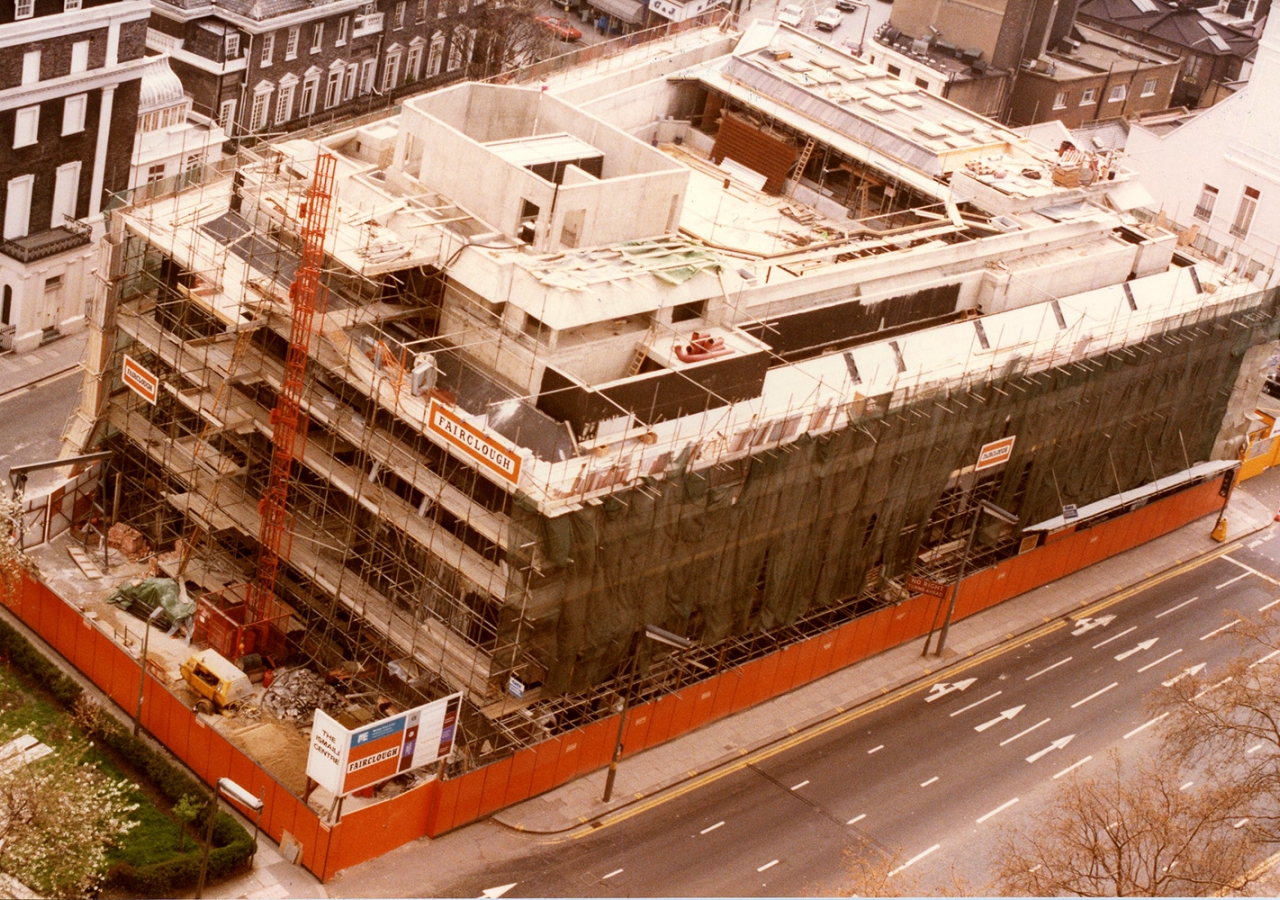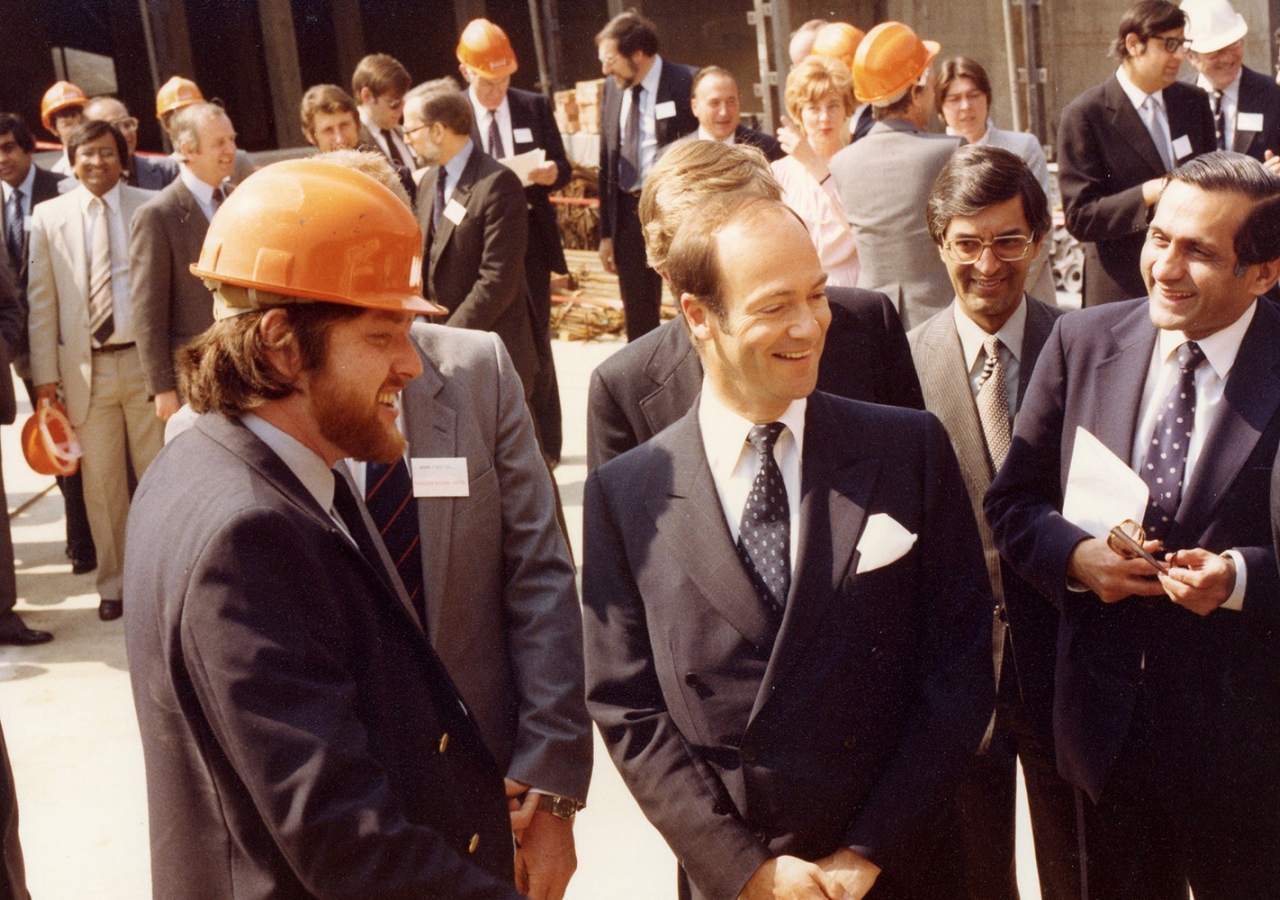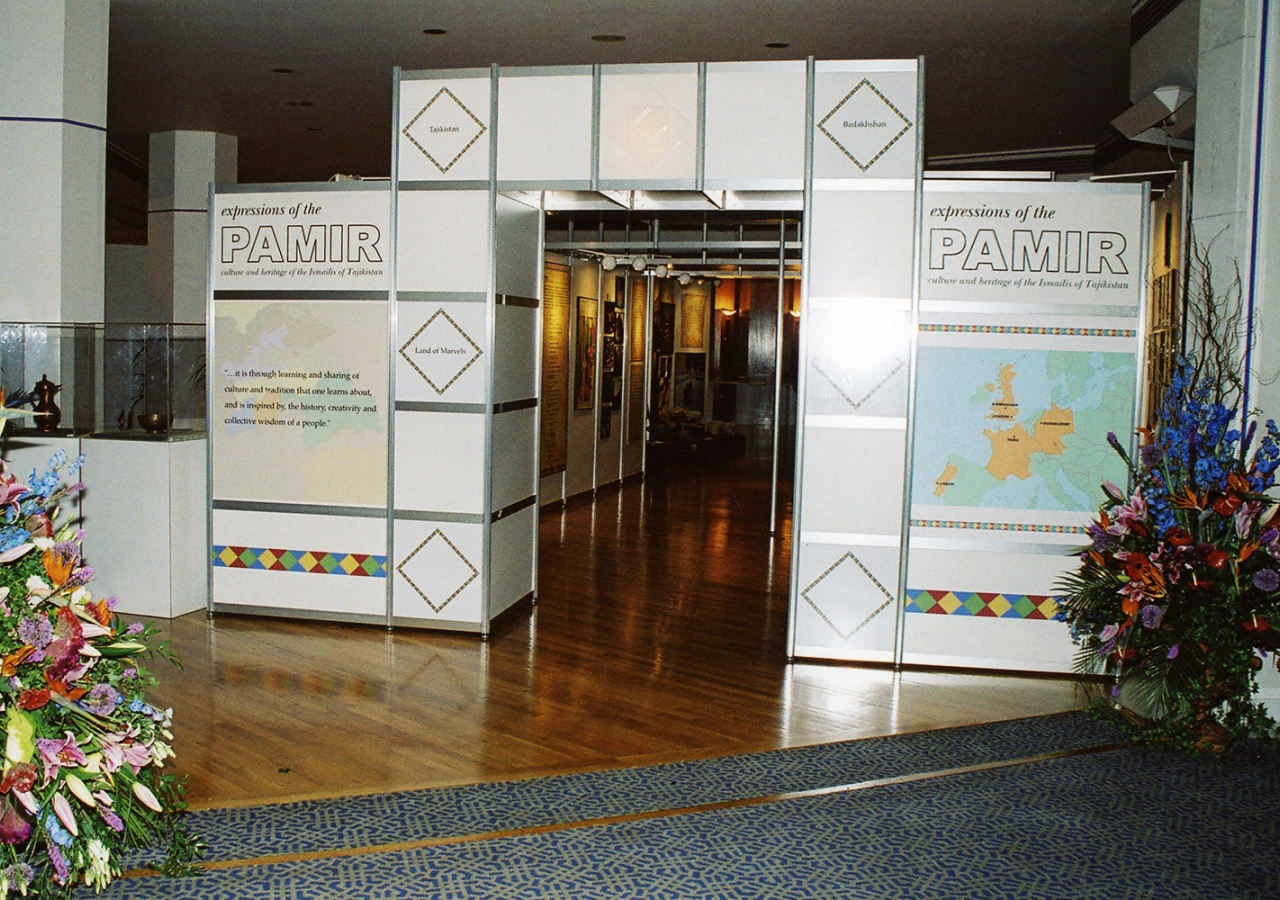Thirty years ago today, the Right Honourable Margaret Thatcher, then Prime Minister of the United Kingdom, travelled to Cromwell Gardens in South Kensington, in the heart of London. There, in the presence of Mawlana Hazar Imam and his family, Prime Minister Thatcher opened the Ismaili Centre.
» Video: Mawlana Hazar Imam speaks at the opening of the Ismaili Centre, London
» Mawlana Hazar Imam and Prince Charles visit the Ismaili Centre, London in commemoration of its 25th anniversary
» Ismaili Centre welcomes visitors during Open House weekend in London
Despite its prominent location, the building had an understated presence. Situated on a wedge of land adjacent to Exhibition Road under the gaze of the Victoria and Albert and Natural History museums, the Ismaili Centre was the first such high-profile centre to be conceived. It’s architects, the Casson Conder Partnership, designed it to be in harmony with its surroundings yet reflect a mood of Islamic architectural tradition.
It quickly became a focal point for the religious and social life of the Jamat in the United Kingdom. Over time it also took on an ambassadorial function, facilitating new relationships and an improved understanding within British society of both the Shia Ismaili Muslim community and the wider Muslim ummah.
Ismaili Centres have since been established in Vancouver, Lisbon, Dubai, Dushanbe, and most recently in Toronto. Each is a symbolic marker of the permanent presence of the Ismaili community, and all share certain common aspirations.
“Like other Ismaili Centres around the world, the London Centre serves not only as a gathering place for Ismailis, but as an active participant in local society, sponsoring a variety of cultural initiatives — exhibitions, lectures and other public events,” remarked Mawlana Hazar Imam in a 2008 speech he made in London. “These efforts reflect our pride in our heritage and our eagerness to share it with others.”
Over the past three decades, numerous initiatives at the Centre have informed and educated members of the Jamat and British society in general, of Islam’s diverse heritage and traditions. For example, in 2003 scholars of religion and the humanities, came together to discuss contemporary academic work on the artistic expression found in the Holy Qur’an. The international colloquium Word of God, Art of Man commemorated 25 years of The Institute of Ismaili Studies, and took place over the course of four days. The Ismaili Centre provided the ideal setting: mirroring in its architecture certain passages of the Qur’an, particularly those on the significance of water and the symbolism of light.
The building plays an important role in promoting a spirit of intellectual endeavour, which aligns with the Shia interpretation of Islam as a thinking, spiritual faith. Lectures, symposia, performances, and graduation ceremonies have been staged at the Ismaili Centre, celebrating the quest for knowledge that is traditional to Muslim societies past and present.
The Ismaili Centre regularly opens its doors to the general public for major events. The Spirit and Life exhibition in July 2007 marked the inauguration of Mawlana Hazar Imam’s Golden Jubilee celebrations with the first public display of the Aga Khan Museum collection — now permanently housed in Toronto. Opened by His Royal Highness Prince Charles, the exhibition was seen by over 25,000 visitors to the Ismaili Centre over a number of weeks, with support provided by volunteers from the UK and European Jamats. In touring the exhibition and the Ismaili Centre, the Prince of Wales recognised the deep-rooted values of the Ismaili community.
“These values celebrate humility, greatness of soul, honour, magnanimity and, indeed, hospitality,” remarked Prince Charles. “They form the bedrock of the excellent outreach work of the Ismaili Centre. These shared values are perhaps, the greatest of the treasures displayed here today.” Each year, the Centre also takes part in notable events such as Open House London, Open Garden Squares and the Exhibition Road Music Day, allowing interested visitors to experience the building via guided tours.
“I have been really impressed, mostly by how generous people have been with their information,” remarked one visitor. “But what surprised me most is that so many people in the community put in so much voluntary hours to work for the Centre.” The events and the tours are an opportunity for visitors to learn about ethics and traditions of the Ismaili community, and they invariably depart with a better appreciation for the work of the Imamat and Jamat.
London is a major waypoint in today’s interconnected world, and the Ismaili Centre provides an important platform for dialogue and discussion on contemporary topics of global relevance. In addition to Baroness Thatcher and Prince Charles, the Ismaili Centre has welcomed distinguished figures in politics, religious authorities, leaders of industry and members of royalty. These have included Prime Minister David Cameron, Mayor of London Boris Johnson, former Governor General of Canada Adrienne Clarkson, Queen Noor of Jordan, and numerous diplomats from around the world. In the spirit of friendship and harmony, many of these figures have paid tribute to the on-going efforts of Mawlana Hazar Imam and the global Jamat.
The Ismaili Centre, London is a bridge between the cultures of East and West, between past and present, and between the temporal and spiritual worlds. As a symbol of Shia Ismaili identity, it represents the Jamat’s permanent presence in the Western world, and reflects the community’s aspirations to continue contributing to civil society in the United Kingdom and beyond.
“It is a splendid contribution to the architecture of London, fitting in easily with the other fine buildings of South Kensington, yet having its own distinctive character too,” said Prime Minister Thatcher in 1985 at the opening of the Centre. “It is a monument to the determination of your community to play a full part in the life of our society, while at the same time retaining their own identity and independence.”
Spoken three decades ago, the late Baroness Thatcher’s words still ring true.















